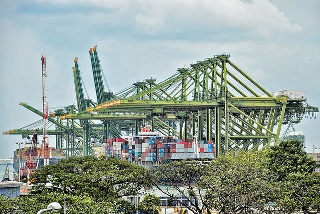 Ocean carriers increased freight rates on the Asia-Northern Europe trade lane dramatically during the last two weeks of March as freight traffic improved, but then lost their gains in April and May, according to Drewry Maritime Research.
Ocean carriers increased freight rates on the Asia-Northern Europe trade lane dramatically during the last two weeks of March as freight traffic improved, but then lost their gains in April and May, according to Drewry Maritime Research.
According to the World Container Index, the average freight rate quoted to forwarders from Shanghai to Rotterdam rose from US$1,748 per 40-foot unit on March 27 to $2,398 per 40-foot on April 3, the main driver of which was a general rate increase of $500 per 20-foot-equivalent unit on April 1.
Since then, weekly spot freight rates have oscillated sharply around a slightly lower average of $2,320 per 40-foot, ending up at $2,289 per 40-foot by the end of May, “indicating that May’s GRI was a total failure,” said Drewry.
“Although Zim Line’s withdrawal from the trade lane should have resulted in one less competitor driving down rates, it is reported that at least one of its vessels had to be repositioned back to Europe empty, encouraging the offer of particularly attractive cost cutting rates,” it added.
The World Container Index Shanghai-Rotterdam benchmark of June 5 rose by $50 only, despite market fundamentals being back in ocean carriers’ favor due to seasonal cargo growth. However, Drewry thinks freight rates could still go up, especially following the news that Maersk, MSC, and CMA CGM will implement the P3 alliance’s service launch after the peak season.
On the eastbound lane, ocean carriers continued to increase freight rates slowly from Northern Europe to Asia between February and April. According to the World Container Index, the average freight rate from Rotterdam to Shanghai gradually rose from an average of $828 per 40-foot in February to $884 per 40-foot container in May.
“Eastbound cargo growth is back, making vessels seem less empty, added to which ocean carriers now need to get container equipment back to Asia in time for the peak season, and so will not be interested in any cargo that delays the re-positioning process unduly,” said Drewry.
Ocean carriers appear well placed to increase freight rates further up to the end of the third quarter, “providing the need for greater market share remains secondary,” it continued.
Photo: Choo Yut Shing




